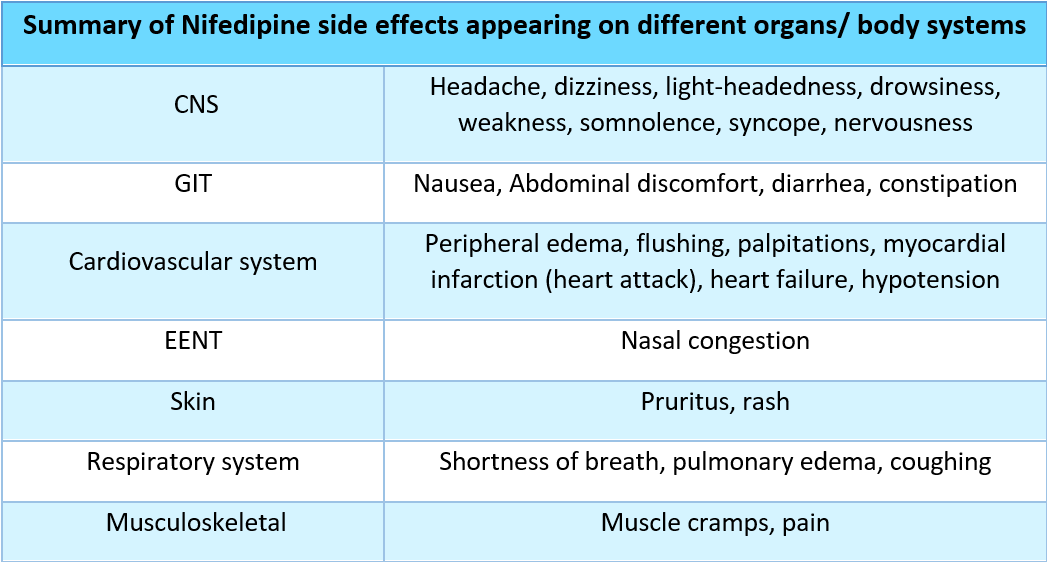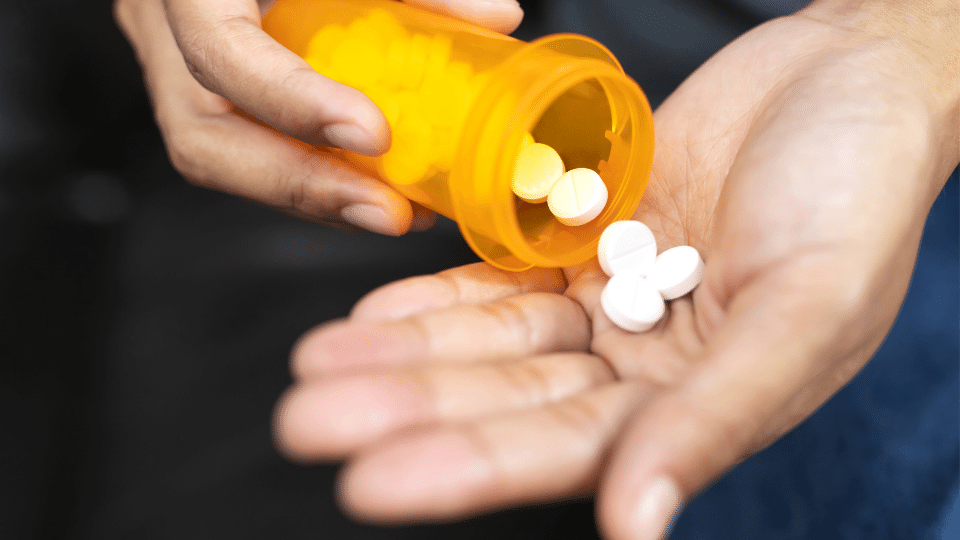These side effects emerge as a result of orally taking nifedipine. However, if you are using nifedipine ointment for anal fissures, you still might experience some of these side effects due to systemic absorption of the ointment.
Among age groups, elderly might be more susceptible to these side effects. Elderly might also experience a greater hypotension response during therapy. In addition, constipation might be a greater problem in these patients. This is due to the longer half life of nifedipine in elderly (6.7 hours) when compared to younger individuals (3.8 hours).

1. Joint formulary committee, BNF 80 (The British National Formulary), 80th Revised edition, Pharmaceutical Press, London, United Kingdom, [2020]
2. Kizior, R.J. and Hodgson, B.B. (2018). Saunders nursing drug handbook 2019. Philadelphia: Saunders.
3. British Medical Association (2015). British Medical Association new guide to medicine & drugs. London: Dorling Kindersley.
4. Williams and Wolters Kluwer Health (2012). Nursing 2012 drug handbook. Philadelphia, Pa.: Wolters Kluwer Health/Lippincott Williams & Wilkins.
5. Kolesar, J.M. (2016). Mcgraw-hill’s 2018/2019 top 300 pharmacy drug cards.
6. Lacy, C. (2006). Lexi-Comp’s Drug information handbook international. Hudson, Ohio: Lexi-Comp.
Nifedipine is a calcium channel blocker and it is widely prescribed to treat high blood pressure. Read more about its other uses and side effects.

Dosage guide of nifedipine: Click to read about the dose for your specific condition and age group.

The urethra is a muscular canal that extends from the neck of the bladder to the exterior of body. Read more about the anatomy of urethra in this article.

Chronic kidney disease (CKD) is a disease in which irreversible damage to the kidneys leads to a reduction in kidney function. CKD has 5 stages and many complications.

Learn about medical uses, safety profile, mechanisms and interactions of statins.

Comprehensive guide on Ozempic (semaglutide), including its uses, dosage, side effects, warnings, and interactions.
.png)